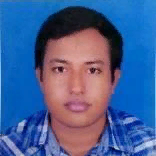International Journal of Image, Graphics and Signal Processing (IJIGSP)
IJIGSP Vol. 11, No. 10, 8 Oct. 2019
Cover page and Table of Contents: PDF (size: 777KB)
Detection of Different Brain Diseases from EEG Signals Using Hidden Markov Model
Full Text (PDF, 777KB), PP.16-22
Views: 0 Downloads: 0
Author(s)
Index Terms
Electroencephalography (EEG), Hidden Markov Model (HMM), Baum-Welch algorithm (B-W algorithm), Initial probability matrix, Transition probability matrix.
Abstract
The brain imaging device, Electroencephalography (EEG) provides several advantages over other brain signals like Functional Near-infrared Spectroscopy (fNIRS) and Functional Magnetic Resonance Imaging (fMRI). It is non-invasive and easily applicable. EEG provides high temporal resolution with a low setup cost. EEG signals of several subjects which record electric potential caused by neurons firing in the brain are undergone a Hidden Markov Model (HMM) classification technique. We are particularly interested to detect the brain diseases from EEG signals by an HMM probabilistic model. This HMM model is built with a given initial probability matrix of five different states, namely, epilepsy, seizure, dementia, stroke and normality. The transition probability matrix is updated after each iteration of parameter estimation using Baum-Welch algorithm (B-W algorithm).
Cite This Paper
Md. Hasin R. Rabbani, Sheikh Md. Rabiul Islam, "Detection of Different Brain Diseases from EEG Signals Using Hidden Markov Model", International Journal of Image, Graphics and Signal Processing(IJIGSP), Vol.11, No.10, pp. 16-22, 2019. DOI: 10.5815/ijigsp.2019.10.03
Reference
[1]M. Lasfar, H.Bouden, “A method of data mining using Hidden Markov Models (HMMs) for protein secondary structure prediction,” Procedia Computer Science 127, pp. 42-51, 2018.
[2]R. Mouhcine, A. Mustapha, M. Zouhir, “Recognition of cursive Arabic handwritten text using embedded training based on HMMs,” Journal of Electrical Systems and Information Technology 5, pp. 245-251, 2018.
[3]A.S. Dhawan, J. Kosecka, H. Rangwala, S. Sikdar, “An intuitive muscle-computer interface using ultrasound sensing and Markovian state transitions,” 2018 IEEE 15th International Symposium on Biomedical Imaging, April 4-7, 2018.
[4]J. Li, T. Lei, F. Zhang, “An Gaussian-Mixture Hidden Markov Models for Action Recognition Based on Key Frame,” 11th International Congress on Image and Signal Processing, BioMedical Engineering and Informatics (CISP-BMEI), 2018.
[5]H. Tan, P. Fischer, S. A. Shah, D. Vidaurre, M. W. Woolrich, P. Brown, “ Decoding Movement States in Stepping Cycles based on Subthalamic LFPs in Parkinsonian Patients,” IEEE, pp. 1384-1387, 2018.
[6]E. Rabhi, Z. Lachiri, “Personal identification system using physiological signal,” IEEE 4th Middle East Conference on Biomedical Engineering (MECBME), pp. 153-158, 2018.
[7]T. A. W. Bolton, A. Tarun, V. Sterpenich, S. Schwartz, D. M. D. Ville, “Interactions Between Large-Scale Functional Brain Networks are Captured by Sparse Coupled HMMs,” IEEE Transactions on Medical Imaging, Vol. 37, No. 1, pp. 230-240, January 2018.
[8]D. Oletic, V. Bilas, “Asthmatic Wheeze Detection from Compressively Sensed Respiratory Sound Spectra,” IEEE Journal of Biomedical and Health Informatics, 2017.
[9]I. Sgouralis, S.Presse, “An Introduction to Infinite HMMs for Single-Molecule Data Analysis,” Biophysical Journal 112, pp. 2021-2029, May 23, 2017.
[10]S. Ghosh, J. Li, L. Cao, K. Ramamohanarao, “Septic shock prediction for ICU patients via coupled HMM walking on sequential contrast patterns,” Journal of Biomedical Informatics 66, pp. 19-31, 2017.
[11]M. H. Rahmani, F. Almasganj, “Lip-reading via a DNN-HMM Hybrid System Using Combination of The Image-based and Model-based Features,” 3rd International Conference on Pattern Recognition and Image Analysis, pp. 195-199, April 19-20, 2017.
[12]S. Yu, H. Chen, R. A. Brown, “Hidden Markov Model-Based Fall Detection with Motion Sensor Orientation Calibration: A Case for Real-Life Home Monitoring,” IEEE Journal of Biomedical and Health Informatics, 2017.
[13]K. Guo, H. Candra, H. Yu, H. Li, H. T. Nguyen, S. W. Su, “EEG-based Emotion Classification Using Innovative Features and Combined SVM and HMM Classifier,” IEEE, pp. 489-492, 2017.
[14]T. Yang, W. Huang, Z. Jiang, C. K. Chui, L. Jiang, “ Stacked Hidden Markov Model for Motion Intention Recognition,” IEEE 2nd International Conference on Signal and Image Processing, pp. 266-271, 2017.
[15]M. Mohammadpour, V. Rahmani, “A Hidden Markov Model-Based Approach to Removing EEG Artifact,” 5th Iranian Joint Congress on Fuzzy and Intelligent Systems (CFIS), pp. 46-49, 2017.
[16]J. Wahlstrom, I. Skog, P. Handel, F. Khosrow-khavar, K. Tavakolian, P. K. Stein, A. Nehorai, “A Hidden Markov Model for Seismocardiography,” IEEE Transactions on Biomedical Engineering, 2017.
[17]S. M. Bhatti, M. S. Khan, J. Wuth, F. Huenupan, M. Curilem, L. Franco, N. B. Yoma, “Automatic detection of volcano-seismic events by modeling state and event duration in hidden Markov models,” Journal of Volcanology and Geothermal Research 324, pp. 134-143, 2016.
[18]J. C. Kao, P. Nuyujukian, S. I. Ryu, K. V. Shenoy, “A high-performance neural prosthesis incorporating discrete state selection with hidden Markov models,” IEEE Transactions on Biomedical Engineering, 2016.
[19]C. Song, K. Liu, X. Zhang, L. Chen, X. Xian, “An Obstructive Sleep Apnea Detection Approach Using a Discriminative Hidden Markov Model from ECG Signals,” IEEE Transactions on Biomedical Engineering, 2015.
[20]P. Ambrosini, I. Smal, D. Ruijters, W. J. Niessen, A. Moelker, T. V. Walsum, “A Hidden Markov Model for 3D Catheter Tip Tracking With 2D X-ray Catheterization Sequence and 3D Rotational Angiography,” IEEE Transactions on Medical Imaging, Vol. 36, pp. 757-768, March 2017.
[21]K. M. Vamsikrishna, D. P. Dogra, M. S. Desarkar, “Computer-Vision-Assisted Palm Rehabilitation With Supervised Learning,” IEEE Transactions on Biomedical Engineering, Vol. 63, pp. 991-1001, May 2016.
[22]R. V. Andreao, B. Dorizzi and J. Boudy, "ECG signal analysis through hidden Markov models," in IEEE Transactions on Biomedical Engineering, vol. 53, no. 8, pp. 1541-1549, Aug. 2006.
[23]N. Naseer, K.S. Hong, “fNIRS-based brain-computer interfaces: a review”, Frontiers in Human Neuroscience, Volume 9, Article 3, pp. 6-7, January 2015.
[24]L.M. Hirshfield, “Combining Electroencephalograph and Functional Near Infrared Spectroscopy to Explore Users” Mental Workload. In: Schmorrow D.D., Estabrooke I.V., Grootjen M. (eds) Foundations of Augmented Cognition. Neuroergonomics and Operational Neuroscience. FAC 2009. Lecture Notes in Computer Science, vol 5638. Springer, Berlin, Heidelberg.
[25]Yuzhen Ye, “HMM: Parameter Estimation”, I529: Machine Learning in Bioinformatics, pp. 14-23, Spring 2013.
[26]A. Harati, S. López, I. Obeid, J. Picone, M. P. Jacobson and S. Tobochnik, "The TUH EEG CORPUS: A big data resource for automated EEG interpretation," 2014 IEEE Signal Processing in Medicine and Biology Symposium (SPMB), Philadelphia, PA, 2014, pp. 1-5.
[27]A. Khorasani, M.R. Daliri, “HMM for Classification of Parkinson’s Disease Based on the Raw Gait Data”, J Med Syst. 2014 Dec;38(12):147
[28]Y. Wu and S. Krishnan, "Statistical Analysis of Gait Rhythm in Patients With Parkinson's Disease," in IEEE Transactions on Neural Systems and Rehabilitation Engineering, vol. 18, no. 2, pp. 150-158, April 2010.
[29]B. Resch, “Hidden Markov Models: A Tutorial for the Course Computational Intelligence”, Signal Processing and Speech Communication Laboratory, Inffeldgasse 16c, pp.1-14.
[30]A. Gabell, U. Nayak, “The effect of age on variability in gait”, Journal of Gerontology, vol. 39, no. 6, pp. 662-666, 1984.

